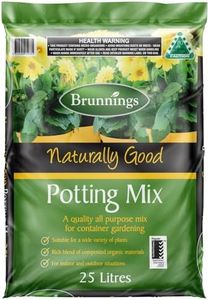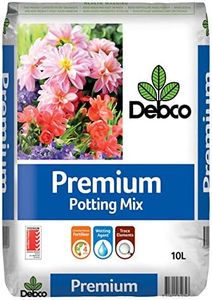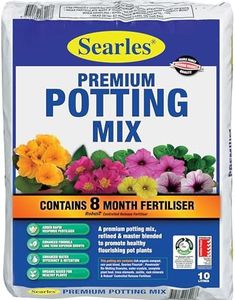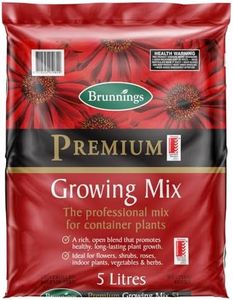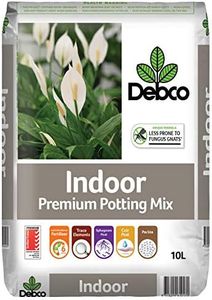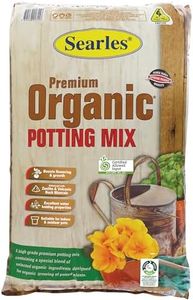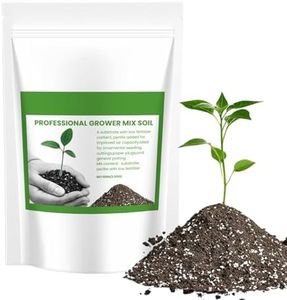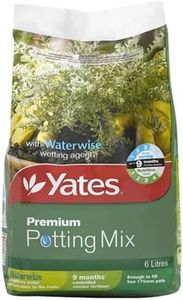We Use CookiesWe use cookies to enhance the security, performance,
functionality and for analytical and promotional activities. By continuing to browse this site you
are agreeing to our privacy policy
10 Best Tomato Potting Soil
From leading brands and best sellers available on the web.Buying Guide for the Best Tomato Potting Soil
Growing healthy and productive tomato plants relies heavily on choosing the right potting soil. Since tomatoes have strong nutritional needs and roots that demand both moisture and air, the right soil will help your plants thrive, whether you're gardening indoors, on a patio, or in your backyard. When choosing tomato potting soil, you'll want to think about not only the basic composition, but also how well it fits your planned style of growing—such as containers, raised beds, or greenhouse environments.Nutrient ContentNutrient content refers to the soil’s ability to provide vital minerals like nitrogen, phosphorus, and potassium. This is crucial because tomatoes need a steady supply of nutrients to produce healthy leaves and fruits. Soils specifically labeled as 'enriched' often contain slow-release fertilizers or organic amendments. Basic (unenriched) mixes may require you to add your own fertilizer. If you want an easy, ready-to-go solution or are new to gardening, look for enriched soils. Experienced gardeners who want more control might prefer basic mixes so they can customize nutrients.
Drainage and AerationThis describes how well the soil allows water to flow through and how much air it holds for roots. Tomato roots dislike sitting in water, which can cause rot. Good soils will mention perlite, vermiculite, or coconut coir in their mix. Fast-draining soils are best for areas with heavy rain or for those who tend to water more often, while mixes that retain moisture are helpful in hot, dry climates. If you notice roots often get soggy or struggle to breathe, choose a lighter, more aerated mix.
pH LevelpH measures how acidic or alkaline your soil is, on a scale from 0 (very acidic) to 14 (very alkaline). Tomatoes prefer a slightly acidic environment, generally between 6.0 and 6.8. If the pH is too low or high, the plant can't absorb nutrients efficiently. Many commercial tomato soils are designed to be in the ideal range—check for this on the label. If you have specific pH needs, look for soils that mention pH balance or consider testing and adjusting yourself with additives.
Organic vs. Synthetic IngredientsSome potting soils use only natural components (like compost or worm castings), while others include synthetic fertilizers. Organic soils are often preferred for edible plants, as many gardeners believe they're safer and better for long-term soil health. However, synthetic mixes might offer a quick nutrient boost. If you prioritize organic gardening or want to avoid chemicals, look for 'certified organic' on the bag. If you need vigorous initial growth or rapid results, synthetic blends may work as well.
Texture and ConsistencyTexture means how the soil feels—fine, chunky, loose, or dense. Tomatoes like soil that is loose enough for roots to spread but dense enough to hold some moisture. Finer soils can get compacted, limiting root growth, while overly chunky soils may not hold moisture well. If you’re potting in small containers, look for a finer mix; larger containers or outdoor beds can handle a chunkier blend with bigger particles.
